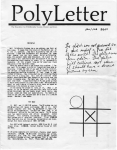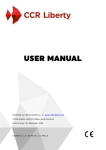Download Wiley PowerPoint 2007 All-in-One Desk Reference For Dummies
Transcript
Chapter 1: Customizing PowerPoint Changing around the Quick Access toolbar TE Choosing a PowerPoint color scheme RI Choosing what appears on the Status bar AL In This Chapter T D MA his short chapter describes a handful of things you can do to customize PowerPoint. Don’t be afraid to make like a software developer and change the program to your liking. Many people are wary of retooling PowerPoint, but you can always reverse the changes you make if you don’t like them, as I explain throughout this chapter. GH TE This chapter shows how to put your favorite button commands on the Quick Access toolbar. Instead of fishing around for your favorite commands, you can assemble them on the Quick Access toolbar and locate them right away. You also discover how to change around the Status bar and dress up PowerPoint in a new set of clothes. PY RI Customizing the Quick Access Toolbar CO The Quick Access toolbar, located in the upper-left corner of the screen, offers three important buttons — Save, Undo, and Repeat. No matter where you go in PowerPoint, these buttons are ready and waiting on the Quick Access toolbar. However, which buttons appear on the Quick Access toolbar is entirely up to you. You can put your favorite buttons on the toolbar and keep them within reach. And if the Quick Access toolbar gets too big, you can move it below the Ribbon, as shown in Figure 1-1. Adding buttons to and removing buttons from the Quick Access toolbar is, I’m happy to report, a piece of cake. And moving the toolbar below the Ribbon is as easy as pie. 572 Customizing the Quick Access Toolbar Figure 1-1: Merely by rightclicking, you can add a button to the Quick Access toolbar. Right-click a button to add it to the toolbar. The Quick Access toolbar below the Ribbon. Adding buttons to the Quick Access toolbar Use one of these techniques to add buttons to the Quick Access toolbar: ✦ Right-click a button you want to see on the toolbar and choose Add to Quick Access Toolbar on the shortcut menu (refer to Figure 1-1). You can also add a gallery to the toolbar by right-clicking the gallery and choosing Add Gallery to Quick Access Toolbar. ✦ Right-click any button or tab and choose Customize Quick Access Toolbar on the shortcut menu. You see the Customize category of the PowerPoint Options dialog box, as shown in Figure 1-2. On the Choose Commands From drop-down list, select the name of the tab with the button you want to add to the Quick Access toolbar. Then select the button’s name and click the Add button. To restore the Quick Access toolbar to its original three buttons (Save, Undo, and Repeat), click the Reset button on the Customize tab of the PowerPoint Options dialog box (refer to Figure 1-2). Unless you declare otherwise, changes you make to the Quick Access toolbar apply to all the presentations you work on. You can, however, construct a toolbar for a single presentation. If your presentation requires choosing many commands that pertain to graphics, for example, you can load the Quick Access toolbar with commands from the (Drawing Tools) Format tab and make your work a little easier. To alter the Quick Access toolbar for a single presentation, go to the Customize category of the PowerPoint Options dialog box (refer to Figure 1-2), open the Customize Quick Access Toolbar drop-down list, choose the name of your presentation, and then start altering the toolbar. Customizing the Quick Access Toolbar Select a tab. 573 Select a button and click Add. Figure 1-2: Use this dialog box to add, remove, and reorder buttons. Changing the order of buttons on the Quick Access toolbar 1. Right-click any button or tab and choose Customize Quick Access Toolbar. The Customize category of the PowerPoint Options dialog box appears (refer to Figure 1-2). 2. Select the name of a button on the right side of the dialog box and click the Move Up or Move Down button. 3. Repeat Step 2 until the buttons are in the right order. 4. Click OK. Customizing PowerPoint Follow these steps to change the order of buttons on the Quick Access toolbar: Book VII Chapter 1 574 Customizing the Quick Access Toolbar Removing buttons from the Quick Access toolbar Use one of these techniques to remove buttons from the Quick Access toolbar: ✦ Right-click a button on the toolbar and choose Remove from Quick Access Toolbar on the shortcut menu, as shown in Figure 1-3. ✦ Right-click any button or tab and choose Customize Quick Access Toolbar. You see the Customize category of the PowerPoint Options dialog box (refer to Figure 1-2). Select the button you want to remove on the right side of the dialog box and click the Remove button. Figure 1-3: Right-click a button or tab to remove it. Placing the Quick Access toolbar above or below the Ribbon The Ribbon is the stretch of ground along the top of the screen where the tabs and buttons are found. If your Quick Access toolbar is too large, consider placing it below the Ribbon, not above it (refer to Figure 1-1). Follow these instructions to place the Quick Access toolbar above or below the Ribbon: ✦ Quick Access toolbar below the Ribbon: Right-click the toolbar and, on the shortcut menu, choose Show Quick Access Toolbar Below the Ribbon. ✦ Quick Access toolbar above the Ribbon: Right-click the toolbar and, on the shortcut menu, choose Show Quick Access Toolbar Above the Ribbon (refer to Figure 1-3). The PowerPoint Options dialog box offers a check box called Show Quick Access Toolbar below the Ribbon (refer to Figure 1-2). You can select this check box as well to move the toolbar below the Ribbon. Customizing the Status Bar 575 Customizing the Status Bar The Status bar along the bottom of the window gives you information about your presentation. It tells you which slide you’re looking at and the theme you chose for your presentation. It also presents the View buttons, the Fit to Page button, and Zoom controls, among other amenities. To choose for yourself what appears on the Status bar, right-click it. You see the pop-up menu shown in Figure 1-4. By selecting and unselecting items on this menu, you can decide what appears on the Status bar. Figure 1-4: Right-click the Status bar to customize it. Book VII Chapter 1 ✦ View Indicator: In Normal view, tells you which slide is displayed and how many slides are in your presentation. I see no reason for jettisoning this one. ✦ Theme: Tells you which theme you selected for your presentation. ✦ Spell Check: Displays an icon that indicates whether spelling errors are found on a slide. Customizing PowerPoint Select or unselect these options to take command of the Status bar: 576 Changing Color Schemes ✦ Language: Lists which language has been assigned to text you select. This one is useful if yours is a polyglot presentation. See Book II, Chapter 4. ✦ Signatures: Shows whether a digital signature has been assigned to this presentation. ✦ Information Management Policy: Declares whether information rights management services have been applied to this presentation. ✦ Permissions: Shows that only co-workers given permission can view or edit the presentation. ✦ View Shortcuts: Displays the Normal, Slide Sorter, and Slide View buttons. This one is essential. ✦ Zoom: Displays the Zoom box, the percentage reading that you can click to see the Zoom dialog box. This one is also essential. ✦ Zoom Slider: Displays the Zoom slider, which you can slide to shrink or enlarge slides on your screen — an essential item. ✦ Fit to Page: Displays the Fit to Page button in Normal view, which enables you to enlarge or shrink the slide such that it fits the screen and you can see it better. Changing Color Schemes Figure 1-5 shows three color schemes with which you can dress up PowerPoint: Blue, Silver, and Black. Which do you prefer? Follow these steps to choose a color scheme for PowerPoint: 1. Click the Office button and choose PowerPoint Options. You see the PowerPoint Options dialog box. 2. Click the Popular category. 3. Open the Color Scheme drop-down list and choose an option. 4. Click OK. How do you like your new get-up? Changing Color Schemes 577 Figure 1-5: Take your choice of these color schemes: Blue (top), Silver (middle), or Black (bottom). Book VII Chapter 1 Customizing PowerPoint 578 Book VII: PowerPoint for Power Users

















